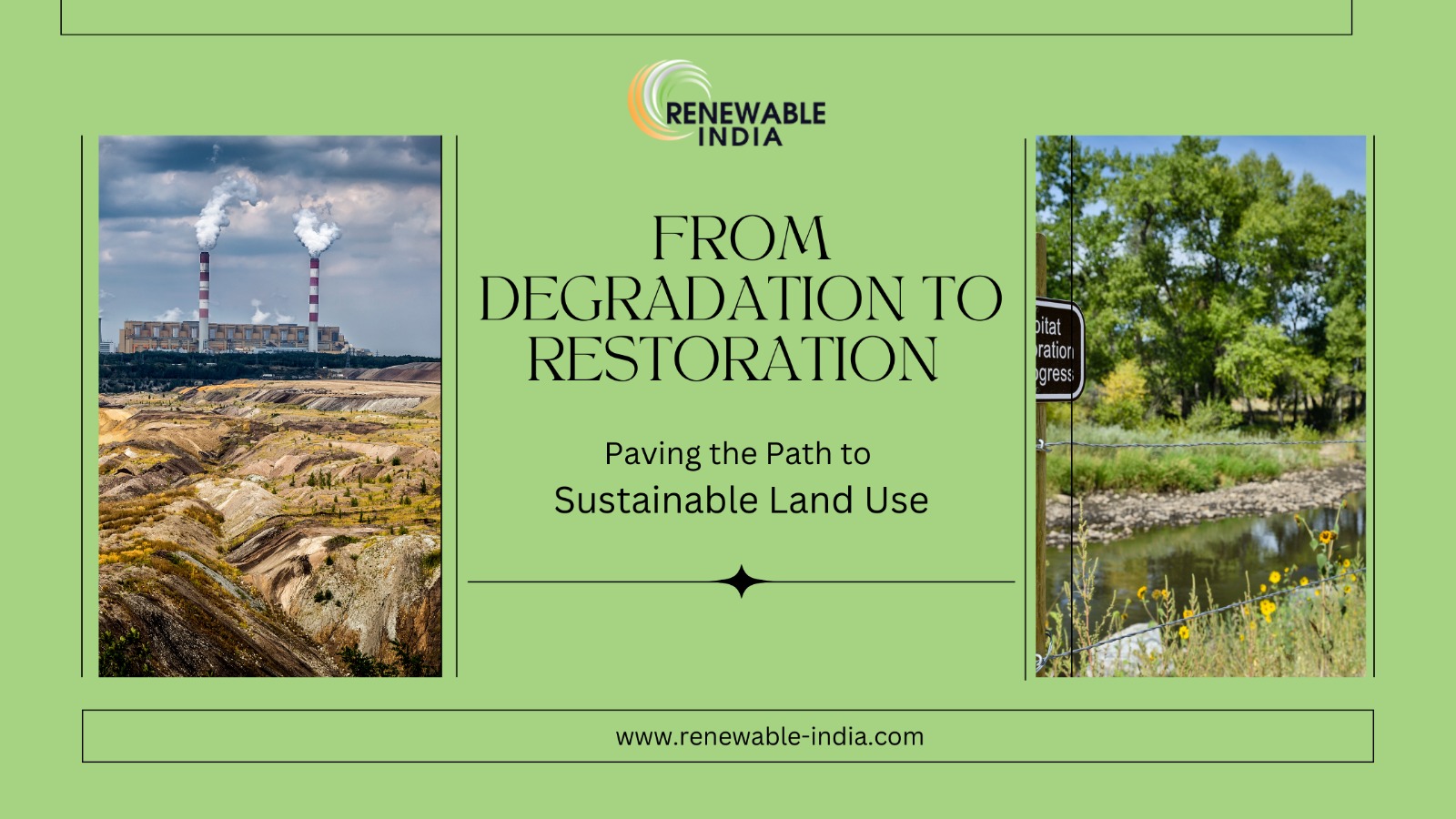
The UN Environment Programme (UNEP) estimates that land degradation is occurring on an estimated 2 billion hectares globally, and this number is likely increasing. According to a satellite-based observational study called Desertification and Land Degradation Atlas by the Indian Space Research Organisation (ISRO), India’s land degradation affected 97.85 million hectares (29.7%) of its total geographical area in 2018-19, up from 94.53 million hectares (28.76%) in 2003-05 and 96.40 million hectares (29.32%) in 2011-13. Desertification also increased to 83.69 million hectares in 2018-19 from 81.48 million hectares in 2003-05 and 82.64 million hectares in 2011-13.
The land beneath our feet, the foundation for our food, our shelter, and the very air we breathe, faces a growing threat: degradation. This World Environment Day, humanity decided to speak up about that. Unsustainable practices like deforestation, overgrazing, and intensive agriculture have left vast swathes of the planet barren, eroded, and stripped of their natural bounty. This alarming trend not only reduces our ability to produce food but also disrupts vital ecological processes, accelerates climate change, and threatens biodiversity. However, a global movement is gaining momentum, advocating for a shift towards sustainable land use – a future where we heal the wounds inflicted and restore the land’s natural capacity to support life.
The stark reality of land degradation is undeniable. According to the UN Environment Programme (UNEP), roughly a quarter of the Earth’s land surface is already degraded, and the rate of degradation continues to escalate. This translates to billions of hectares of lost productivity, impacting food security for millions. The consequences extend far beyond agriculture. Degraded land loses its ability to store carbon, exacerbating climate change. It becomes more susceptible to erosion, leading to increased flooding and sedimentation in rivers and waterways. The decline in healthy ecosystems disrupts natural cycles, pushing countless species towards extinction.
The causes of land degradation are complex and vary by region. In some areas, deforestation for agriculture or timber production is the primary culprit. Overgrazing by livestock can lead to desertification, particularly in arid and semi-arid regions. Intensive farming practices that rely heavily on chemical fertilizers and pesticides can deplete soil nutrients and contaminate water sources.
The good news is that we have the knowledge and tools to reverse this trend. Sustainable land management (SLM) is a holistic approach that prioritizes the long-term health and productivity of the land:
(i) Soil health is paramount: Maintaining soil health is crucial for sustainable agriculture. Practices such as crop rotation, cover cropping, and composting play a vital role in enhancing soil fertility. Crop rotation prevents nutrient depletion by alternating crops with different nutrient needs and pest resistances. Cover cropping, where crops are planted to cover the soil rather than for harvest, helps in preventing erosion, enhancing soil structure, and increasing biodiversity. Composting recycles organic waste into nutrient-rich soil amendments, improving soil structure, water retention, and microbial activity.
(ii) Water conservation: Water conservation techniques are essential in agriculture to address water scarcity and enhance efficiency. Drip irrigation, for example, delivers water directly to the plant roots, minimizing evaporation and runoff, thus significantly reducing water usage. Rainwater harvesting involves collecting and storing rainwater for irrigation, reducing dependency on groundwater and surface water sources.
(iii) Agroforestry: Agroforestry integrates trees and shrubs into agricultural landscapes, offering multiple benefits. Trees protect the soil from erosion, serve as windbreaks, and provide habitat for beneficial microorganisms, insects and wildlife. They also contribute to carbon sequestration, enhancing biodiversity and ecosystem resilience.
(iv) Reduced tillage: Reduced tillage practices minimize soil disturbance, helping to retain soil moisture and organic matter. This promotes a healthy soil structure, improves water infiltration, and supports beneficial soil organisms, leading to better crop yields and reduced soil erosion.
(v) Land use planning: Land use planning is critical for implementing sustainable agricultural practices. By understanding the specific characteristics of a landscape, such as soil type, climate, and topography, farmers can adopt practices tailored to their unique needs. This ensures that agricultural activities are conducted in harmony with the environment, maximizing productivity while minimizing negative impacts.
Beyond these core principles, a successful transition to sustainable land use requires a multi-faceted approach:
(i) Community engagement: Local communities who depend on the land often possess valuable knowledge about its sustainable management. Their participation is essential for developing and implementing effective SLM strategies.
(ii) Policy and incentives: Governments can play a vital role by enacting policies that promote sustainable practices and provide incentives for farmers and land users to adopt them.
(iii) Research and development: Continuous research is crucial for developing new technologies and practices that improve land management and productivity.
(iv) Education and awareness: Raising public awareness about the importance of healthy land and the consequences of degradation is essential for building a strong movement towards sustainability.
Restoring degraded land can significantly enhance its ability to store carbon, mitigating climate change. Healthy ecosystems are more resilient to floods and droughts, reducing the vulnerability of communities to natural disasters.
The journey towards sustainable land use is not without challenges. Transforming entrenched practices often requires significant changes in mindset and behavior. Providing education and training for farmers and land managers is crucial. Establishing effective monitoring and evaluation systems is essential to measure progress and identify areas for improvement. Addressing the financial and technical limitations faced by some communities also requires innovative solutions and international cooperation.
Despite the challenges, the potential rewards are immense. By transitioning to sustainable land use practices, we can heal the Earth, safeguard our food security, and create a more resilient future for generations to come. This is not just about restoring degraded land; it’s about embracing a new relationship with the Earth, one based on respect and responsibility.
Leave a Reply